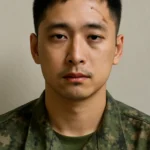Moyamoya disease is a rare, progressive condition that affects the blood vessels in the brain. It can cause a variety of symptoms, such as stroke, seizures, and cognitive impairments, which are particularly concerning for people in physically demanding environments, like the military. For individuals in the army or military service, managing Moyamoya disease presents unique challenges. This article explores Moyamoya disease, its effects, and how it intersects with army service, particularly focusing on the medical exemptions that may arise due to this condition.
What is Moyamoya Disease? Understanding the Basics
Moyamoya disease is a rare cerebrovascular disorder characterized by the gradual narrowing and eventual occlusion of the arteries at the base of the brain. This narrowing leads to the development of small collateral blood vessels, which can appear on imaging as a “puff of smoke” (hence the term “Moyamoya,” which means “puff of smoke” in Japanese). As these vessels attempt to compensate for the reduced blood flow, they often fail to deliver adequate oxygen to brain tissue, resulting in various neurological symptoms.
Symptoms and Diagnosis
Common symptoms of Moyamoya disease include:
-
Transient ischemic attacks (TIAs) – Often referred to as “mini-strokes,” TIAs are temporary episodes of reduced blood flow to the brain, leading to symptoms such as numbness, weakness, or difficulty speaking.
-
Strokes – These are more serious and can result in long-term disability. Strokes in Moyamoya disease are typically ischemic, meaning they occur due to reduced blood flow.
-
Seizures – Brain irregularities caused by insufficient blood supply can also lead to seizure activity.
-
Cognitive Decline – Some individuals experience difficulties with memory, attention, and executive functioning.
Diagnosing Moyamoya disease usually involves brain imaging techniques such as MRI or CT angiography to visualize the narrowing of the arteries and the development of collateral vessels.
Treatment and Management
There is no cure for Moyamoya disease, but treatments focus on managing symptoms and improving blood flow to the brain. The primary treatments include:
-
Surgical Interventions – Procedures like direct or indirect bypass surgery can help improve blood flow to the brain by connecting healthy arteries to those affected by the disease.
-
Medication – Blood thinners or antiplatelet drugs are often used to reduce the risk of stroke.
Although surgical treatments can be effective, ongoing management is crucial for preventing further complications and ensuring a good quality of life.
Moyamoya Disease and the Military: Exemption and Challenges
In many countries, including South Korea, military service is mandatory for most able-bodied men. However, individuals diagnosed with medical conditions like Moyamoya disease may face challenges in meeting the physical demands required for military duty. The condition’s potential for strokes or other neurological events raises concerns about whether an individual can serve without putting themselves or others at risk.
Medical Exemption from Military Service
Moyamoya disease can be grounds for exemption from mandatory military service, depending on the severity of the condition. In South Korea, where medical conditions are rigorously evaluated during the military enlistment process, those diagnosed with Moyamoya disease may be granted a medical exemption. This exemption is granted after careful evaluation by military doctors, who assess whether the individual’s condition could interfere with their ability to perform military duties safely.
For those who do not qualify for an exemption, medical accommodations may be made to allow for a more limited role within the military. However, these accommodations are often rare, and the risk of further health complications from Moyamoya disease can make it difficult for affected individuals to serve in high-risk areas or combat roles.
The Emotional and Social Impact
Being diagnosed with Moyamoya disease during the military enlistment process can have emotional and social ramifications for individuals. Many young men in countries with mandatory service feel societal pressure to fulfill their military duties. A diagnosis that leads to exemption can sometimes lead to feelings of inadequacy or guilt, even though the exemption is based on legitimate medical concerns.
Furthermore, those with Moyamoya disease who are unable to participate in active military service may experience feelings of isolation or disconnection from their peers. This can have a lasting psychological impact, especially in cultures where military service is considered a significant rite of passage.
Moyamoya Disease in Active Service: Managing Risks
For individuals already serving in the military who are diagnosed with Moyamoya disease, managing the condition while remaining fit for duty is challenging. Military personnel with this condition must be under constant medical supervision to ensure their safety. Regular check-ups, brain scans, and medication are critical to managing the disease.
Preventing Strokes and Seizures
Active duty members with Moyamoya disease may be at increased risk of strokes or seizures, which could occur suddenly during physically strenuous activities. This is particularly concerning during combat training, where high levels of physical exertion and stress can exacerbate symptoms. To mitigate these risks, service members may need to limit their physical activities or undergo surgery to improve blood flow to the brain.
In some cases, soldiers may be assigned to non-combat roles or administrative duties where the physical demands are lower, and there is less risk of exacerbating their condition. However, this may not always be feasible in active military environments, where the needs of the service often dictate the assignments.
Support Systems and Resources
Support from fellow soldiers and military medical personnel plays an essential role in the management of Moyamoya disease in the military. Educating both service members and their commanders about the condition can lead to a more supportive environment and prompt recognition of symptoms. Having a robust support system helps ensure that individuals with Moyamoya disease receive the care and accommodations they need.
Conclusion
Moyamoya disease presents unique challenges for individuals, particularly those in the military, where physical demands and the risk of sudden health complications are heightened. Understanding the symptoms, treatment options, and potential for military exemptions is essential for both affected individuals and military officials. While diagnosis may sometimes lead to exemptions from service, those who continue to serve must navigate a complex balance between managing their health and fulfilling their duties.
As with any medical condition, it’s important to recognize the individual’s needs and provide appropriate accommodations to ensure their well-being. Ultimately, raising awareness about Moyamoya disease can help create a safer, more understanding environment for those affected by this rare condition.






